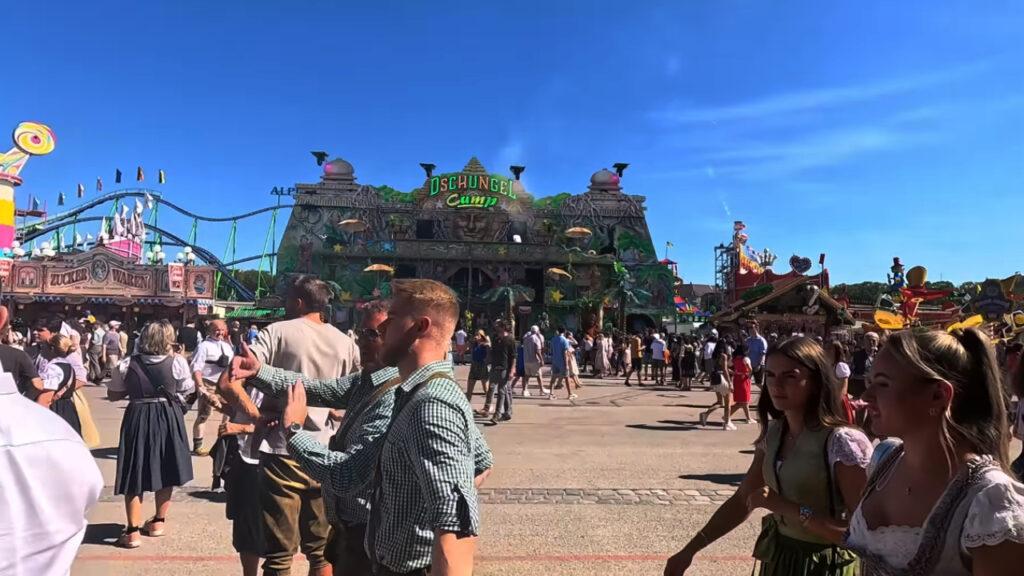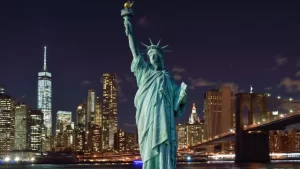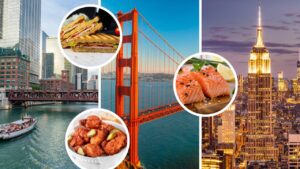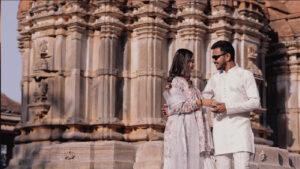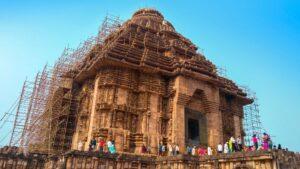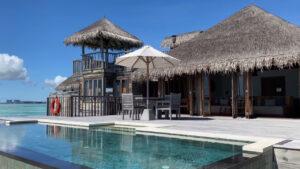Oktoberfest is one of the most famous festivals in the world, drawing millions of visitors each year to Munich, Germany. It’s a celebration of Bavarian culture, beer, and traditional German food, with a rich history that spans over 200 years. Everything you need to know about Oktoberfest, including its origins, key traditions, fun facts, and how you can experience this iconic festival, whether in Munich or closer to home.
What is Oktoberfest?
Oktoberfest is a large beer festival held annually in Munich, Germany, typically lasting 16 to 18 days from mid or late September to the first Sunday in October. It is a time of celebration, where people gather to enjoy Bavarian beer, food, music, and entertainment. Oktoberfest is also known for its vibrant parades, traditional costumes, and carnival rides.
You May Like
While Munich hosts the largest and most famous Oktoberfest, smaller versions of the festival have sprung up worldwide, allowing people to experience Oktoberfest in their own towns and cities.
History of Oktoberfest
Oktoberfest has a fascinating history that dates back to 1810. The first Oktoberfest was held on October 12, 1810, to celebrate the marriage of Crown Prince Ludwig (later King Ludwig I) to Princess Therese of Saxe-Hildburghausen. Citizens of Munich were invited to attend the festivities, which included horse races, music, and dancing. Celebration was so popular that it became an annual event, and the tradition of Oktoberfest was born.
Over the years, the festival evolved. Horse races were eventually discontinued, but the beer tents, food stalls, and other attractions continued to grow. Today, Oktoberfest is a world-famous event, celebrating Bavarian culture and attracting visitors from all over the globe.
Traditions of Oktoberfest
Oktoberfest is steeped in tradition, with many aspects of the festival remaining unchanged for centuries. Most iconic traditions of Oktoberfest:
1. The Opening Ceremony (O’zapft is!)
Festival officially kicks off with the mayor of Munich tapping the first keg of beer and declaring “O’zapft is!” (It’s tapped!). Ceremonial moment that marks the beginning of Oktoberfest. After the first keg is tapped, the beer can start flowing, and the festival begins in earnest.
2. Traditional Bavarian Costumes
One of the highlights of Oktoberfest is the vibrant display of traditional Bavarian clothing. Men typically wear Lederhosen, which are knee-length leather shorts, paired with suspenders, white shirts, and woolen socks. Women wear Dirndls, traditional dresses that consist of a bodice, blouse, full skirt, and apron.
Wearing these traditional costumes is not just for fun; it’s an important part of the cultural experience at Oktoberfest. Many visitors to Munich choose to wear these outfits to fully immerse themselves in the Bavarian atmosphere.
3. Beer and Beer Tents
Beer is the star of Oktoberfest, and it’s served in large one-liter mugs called Maß. Beer served at Oktoberfest is brewed by Munich’s six major breweries and follows strict brewing standards set by the Bavarian Purity Law of 1516. Each beer tent at the festival is run by a different brewery, and there are over 30 beer tents, each offering a unique experience.
Beer tents range from small, cozy spaces to massive structures that can accommodate thousands of people. Each tent has its own theme, music, and atmosphere, with some focused on traditional folk music and others offering modern tunes.
4. Traditional Food
No Oktoberfest would be complete without sampling traditional Bavarian food. Some of the most popular dishes at the festival include:
- Pretzels (Brezn): Giant soft pretzels are a staple at Oktoberfest, often enjoyed with beer.
- Bratwurst: Grilled sausages served with mustard.
- Schweinshaxe: Roasted pork knuckles, a hearty and savory meal.
- Wiener Schnitzel: Breaded and fried veal cutlets.
- Sauerkraut and Red Cabbage: Fermented cabbage and red cabbage served as side dishes.
- Apple Strudel: A sweet pastry filled with apples and cinnamon.
Food at Oktoberfest is rich and flavorful, providing the perfect accompaniment to the beer.
5. Music and Dancing
Oktoberfest is filled with traditional Bavarian music, much of it played by live brass bands. The music ranges from traditional folk songs to modern pop hits, and it’s not uncommon for everyone in a beer tent to stand up on the benches and dance along.
Some of the most popular songs include “Ein Prosit,” a song that encourages everyone to raise their beer and toast to good health. You’ll also hear plenty of polkas, waltzes, and popular German songs.
6. Carnival Rides and Games
In addition to the beer tents and food stalls, Oktoberfest also features a variety of carnival rides, games, and attractions. There are classic rides like Ferris wheels, roller coasters, and carousels, as well as games where you can win prizes. This makes Oktoberfest a fun event for people of all ages, including families.
Oktoberfest Near Me
While Munich is the ultimate Oktoberfest destination, you don’t have to travel to Germany to experience the festival. Many cities around the world hold their own Oktoberfest celebrations, bringing a taste of Bavaria to local communities.
Some of the biggest Oktoberfest events outside of Munich can be found in cities like:
- Kitchener-Waterloo, Canada: Known as the second-largest Oktoberfest celebration in the world, this Canadian city hosts a massive festival that includes traditional beer tents, parades, and live music.
- Cincinnati, Ohio, USA: Cincinnati’s Oktoberfest is the largest in the United States and features German food, beer, and entertainment.
- Blumenau, Brazil: This South American city has a large German community and holds a vibrant Oktoberfest that rivals the one in Munich.
- Sydney, Australia: Sydney’s Oktoberfest is one of the biggest in the southern hemisphere, with plenty of beer, food, and traditional Bavarian activities.
To find an Oktoberfest celebration near you, simply search for “Oktoberfest near me” to discover local events.
Oktoberfest Tours
For those who want the full Oktoberfest experience in Munich, several travel companies offer Oktoberfest tours. Tours often include hotel accommodations, reserved seating in beer tents, guided tours of Munich, and sometimes even a traditional costume to wear during the festivities.
Popular Oktoberfest tour packages typically offer the following:
- Guided tours of Munich: Explore the city’s famous landmarks, including Marienplatz, the English Garden, and Nymphenburg Palace.
- Reserved seating in beer tents: Oktoberfest is known for its crowds, and getting a seat in the most popular beer tents can be a challenge. Many tours offer reserved seating, so you don’t have to worry about missing out on the fun.
- Traditional Bavarian experiences: Learn about Bavarian culture, sample local foods, and enjoy guided tours of historic sites in and around Munich.
Oktoberfest tours are a great way to experience the festival without the hassle of planning every detail yourself.
Oktoberfest Costumes
One of the most exciting aspects of Oktoberfest is dressing up in traditional Bavarian attire. Munich or attending an Oktoberfest celebration near you, wearing an Oktoberfest costume is a great way to get into the spirit of the festival.
Lederhosen for Men
Lederhosen are leather shorts worn with suspenders and a white shirt. Durable and perfect for long days of drinking, dancing, and eating. Lederhosen can vary in length, with some ending just above the knee and others extending to the calf.
Dirndl for Women
Dirndl is a traditional dress worn by women at Oktoberfest. It consists of a fitted bodice, blouse, full skirt, and apron. Way the apron is tied can indicate a woman’s relationship status: tying the apron on the left means she’s single, while tying it on the right means she’s taken.
There are many places to purchase or rent Oktoberfest costumes, both in Munich and online. If you’re attending a local Oktoberfest, you can often find costumes at party supply stores or online retailers.
Fun Facts About Oktoberfest
- It Starts in September: Despite being called “Oktoberfest,” the festival actually begins in September and runs until the first weekend of October. Tradition started in the late 1800s to take advantage of the better weather in September.
- Millions of Liters of Beer Are Consumed: Each year, over 7 million liters of beer are consumed at Oktoberfest. That’s enough to fill nearly three Olympic-sized swimming pools!
- Lost and Found: Oktoberfest’s lost and found collects thousands of items each year, including wallets, passports, and even wedding rings. One year, an entire set of dentures was found!
- Largest Tent Holds 10,000 People: Largest beer tent at Oktoberfest, the Hofbräu-Festzelt, can hold up to 10,000 people at once. It’s one of the most popular tents, known for its lively atmosphere and music.
- Visitors from Around the World: While Oktoberfest is a German tradition, it attracts visitors from all over the world. Each year, millions of tourists from countries like the United States, Australia, and Italy flock to Munich to experience the festival.
Oktoberfest is a one-of-a-kind festival that celebrates Bavarian culture, beer, and tradition. Planning to attend the original event in Munich or a local version of Oktoberfest near you, there’s no shortage of fun, food, and festivities. From the iconic beer tents to the traditional costumes, Oktoberfest is a celebration that brings people together from all walks of life.
